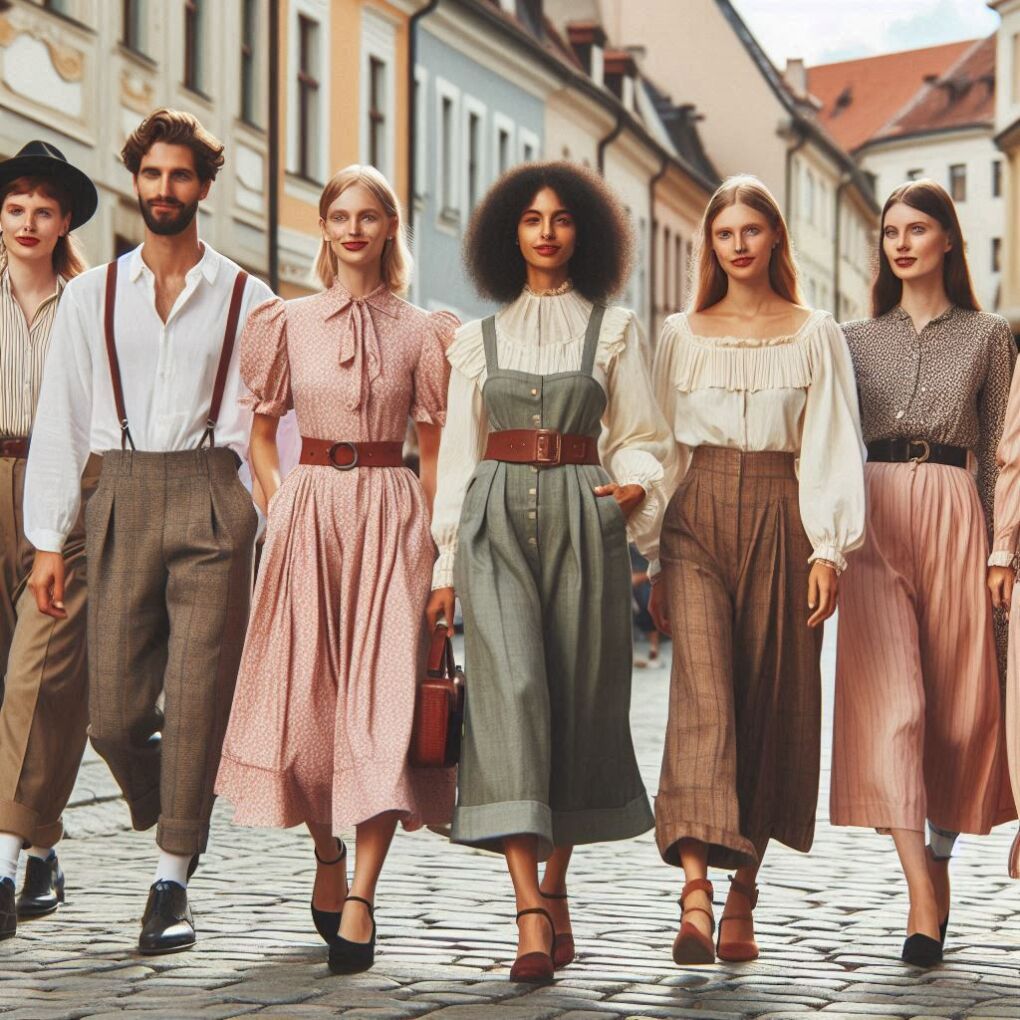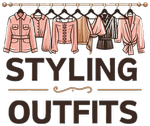In the ever-evolving world of fashion, a movement is taking hold, one that champions ethical practices, environmental consciousness, and social responsibility. This movement, known as “Reformation Fashion,” is redefining the way we perceive and consume clothing, ushering in a new era of mindful style. Join us as we delve into the fascinating realm of Reformation Fashion, exploring its origins, principles, and the trailblazers who are shaping this transformative industry.

The Rise of Reformation Fashion
The roots of Reformation Fashion can be traced back to the growing awareness of the adverse impacts of the traditional fashion industry on the environment and workers’ rights. As consumers became increasingly conscious of the unsustainable practices prevalent in the industry, a demand for ethical alternatives emerged.
One of the pioneers in this movement was Kathleen Talbot, the founder of Reformation, a Los Angeles-based clothing brand. In 2009, Talbot recognized the need for a sustainable and transparent approach to fashion, and her brand quickly became a beacon of hope for eco-conscious fashionistas.
“We’re trying to make the clothes that we fell in love with years ago, but produced in a sustainable way.” – Kathleen Talbot, Founder of Reformation

The Principles of Reformation Fashion
Reformation Fashion is built upon a set of core principles that guide its practices and ethos. These principles include:
- Sustainable Materials: Reformation Fashion advocates for the use of eco-friendly and ethically sourced materials, such as organic cotton, recycled polyester, and Tencel™, a fibre derived from sustainable wood sources.
- Ethical Manufacturing: Brands within this movement prioritize fair labour practices, ensuring that workers are treated with dignity and provided with safe working conditions and fair wages.
- Transparency: Reformation Fashion embraces transparency, enabling consumers to trace the journey of their garments from farm to factory, fostering trust and accountability.
- Circular Design: The movement emphasizes the importance of circular design, where clothing is designed to be recycled, repurposed, or biodegraded at the end of its life cycle, minimizing waste and promoting a closed-loop system.
- Mindful Consumption: Reformation Fashion encourages mindful consumption, encouraging consumers to invest in quality pieces that stand the test of time, reducing the need for frequent and impulsive purchases.

Trailblazers of Reformation Fashion
The Reformation Fashion movement has been propelled by a diverse array of brands and individuals who have embraced these principles wholeheartedly. Here are a few notable trailblazers:
- Reformation: Founded by Kathleen Talbot, this Los Angeles-based brand has become a beacon of sustainable and ethical fashion, utilizing deadstock fabrics, eco-friendly dyes, and transparent manufacturing processes.
- Everlane: With a commitment to “radical transparency,” Everlane has garnered a loyal following by providing detailed information about the origin, materials, and production processes of its clothing.
- Patagonia: A pioneer in outdoor apparel, Patagonia has long been a champion of environmental and social responsibility, using recycled materials and advocating for sustainability through initiatives like “Worn Wear” and “1% for the Planet.”
- Stella McCartney: A luxury brand that has consistently embraced ethical and cruelty-free practices, Stella McCartney has been a driving force behind sustainable and vegan fashion, using innovative materials like regenerated cashmere and recycled polyester.
The Impact of Reformation Fashion
The influence of Reformation Fashion extends far beyond the realm of clothing. By embracing ethical and sustainable practices, this movement is contributing to a broader shift towards a more responsible and conscious society. Here are some of the key impacts:
- Environmental Preservation: Reformation Fashion brands prioritize the use of eco-friendly materials and production methods, reducing the industry’s carbon footprint, water consumption, and waste generation.
- Worker Empowerment: By advocating for fair labour practices and safe working conditions, Reformation Fashion is empowering workers and promoting socio-economic development in communities associated with the fashion industry.
- Consumer Awareness: The transparency and education championed by Reformation Fashion brands have raised consumer awareness about the environmental and social impacts of their purchasing decisions, encouraging mindful consumption.
- Industry Transformation: The success of Reformation Fashion brands has inspired traditional fashion houses to reevaluate their practices, driving industry-wide changes towards more sustainable and ethical operations.
Embracing Reformation Fashion: A Stylish Choice
Embracing Reformation Fashion is not just a fashion statement; it’s a conscious choice to align your personal values with your style. By supporting brands that prioritize sustainability, ethical practices, and transparency, you become an active participant in the movement towards a more responsible and mindful fashion industry.
Here are some tips to help you incorporate Reformation Fashion into your wardrobe:
- Invest in Quality: Opt for well-made, timeless pieces that can be worn for years, reducing the need for frequent replacements and minimizing waste.
- Research Brands: Take the time to research the brands you support, ensuring that they align with the principles of Reformation Fashion, such as using eco-friendly materials, fair labour practices, and transparent supply chains.
- Rent or Swap: Explore clothing rental or swapping services, which allow you to rotate your wardrobe while minimizing your environmental impact and promoting a circular economy.
- Embrace Secondhand: Vintage and secondhand clothing not only add character to your style but also contribute to a circular fashion economy, reducing waste and extending the life cycle of garments.
- Care for Your Clothes: Proper care and maintenance can significantly extend the lifespan of your garments, reducing the need for frequent replacements and minimizing your environmental impact.

The Future of Reformation Fashion
As the world becomes increasingly aware of the urgent need for sustainable practices, the Reformation Fashion movement is poised to gain even greater momentum. With innovative technologies, such as biotextiles and recycled fibres, and growing consumer demand for ethical and sustainable fashion, the future of this movement is bright.
Brands and designers are continuously pushing the boundaries, exploring new materials, production methods, and business models that align with the principles of Reformation Fashion. Collaborations between fashion houses, artists, and sustainability experts are fostering creative solutions and inspiring designs that marry style with responsibility.
Furthermore, the rise of digital technologies and social media platforms has empowered consumers to hold brands accountable and demand transparency, further fueling the growth of the Reformation Fashion movement.
As we look ahead, one thing is certain: Reformation Fashion is more than a passing trend; it’s a revolution that is transforming the fashion industry from the inside out, inspiring us to embrace ethical style with grace and purpose.
In conclusion, the Reformation Fashion movement represents a paradigm shift in the way we perceive and consume fashion. By embracing sustainable practices, ethical manufacturing, and mindful consumption, we can create a more responsible and conscious fashion industry that not only celebrates style but also prioritizes the well-being of our planet and its people.
Key Statistics on Reformation Fashion
| Statistic | Value | Source |
|---|---|---|
| Global Market Size for Sustainable Fashion (2021) | $9.31 billion | Allied Market Research |
| Projected Compound Annual Growth Rate (CAGR) for Sustainable Fashion (2022-2031) | 9.7% | Allied Market Research |
| Reduction in Carbon Emissions by Wearing Clothing for 9 Months Longer | 30% | WRAP |
| Percentage of Fashion Industry’s Global Carbon Emissions | 10% | United Nations Environment Programme |
| Percentage of Materials Used by Reformation Brand That Are Sustainable or Recycled | 92% | Reformation |
Famous Quotes on Reformation Fashion
“Fashion is the armor to survive the reality of everyday life.” – Bill Cunningham
“Sustainable fashion is not just a trend, it’s a necessity.” – Orsola de Castro, Co-Founder of Fashion Revolution
“Sustainability in fashion is not just about the environment, it’s about human rights and social justice too.” – Livia Firth, Founder of Eco-Age
“The future of fashion is circular – it has to be.” – Stella McCartney
“Fashion is not something that exists in dresses only. Fashion is in the sky, in the street, fashion has to do with ideas, the way we live, what is happening.” – Coco Chanel
Embracing Slow Fashion
Closely tied to the Reformation Fashion movement is the concept of “slow fashion,” which encourages mindful consumption and a departure from the fast-paced, disposable nature of the traditional fashion industry. Slow fashion emphasizes quality over quantity, encouraging consumers to invest in timeless pieces that can be cherished and worn for years to come.
One of the key principles of slow fashion is the rejection of the relentless cycle of seasonal trends and the overconsumption that accompanies it. Instead, slow fashion advocates for a more intentional and conscious approach to clothing, where garments are valued for their craftsmanship, durability, and personal significance.
Brands like Eileen Fisher, Cuyana, and Zady have embraced the slow fashion ethos, offering capsule collections of high-quality, versatile pieces that can be mixed and matched, reducing the need for constant wardrobe refreshes.
Reformation Fashion and Circular Economy
The concept of a circular economy is central to the Reformation Fashion movement. A circular economy is a closed-loop system that aims to reduce waste and maximize resource efficiency by keeping materials and products in use for as long as possible.
In the context of fashion, a circular economy approach involves designing garments with their entire life cycle in mind, from the sourcing of materials to their eventual disposal or recycling. This includes:
- Closed-Loop Recycling: Garments are designed to be easily disassembled and recycled, with materials being recovered and reused in new products.
- Resale and Rental Models: Brands encourage consumers to resell or rent items they no longer need, extending the lifespan of garments and reducing waste.
- Repair and Maintenance: Clothing is designed to be durable and easy to repair, promoting longer use and reducing the need for frequent replacements.
- Regenerative Agriculture: Sustainable farming practices are employed to grow natural fibers like cotton and linen, reducing the environmental impact of material production.
Brands, like Rent the Runway, ThredUp, and The RealReal, have pioneered innovative business models that align with the principles of a circular economy, enabling consumers to access fashion in a more sustainable and cost-effective manner.
Reformation Fashion and Inclusivity
While the Reformation Fashion movement has made significant strides in promoting sustainability and ethical practices, it has also faced criticism for a lack of inclusivity. Many sustainable fashion brands have been accused of catering primarily to a limited demographic, often neglecting diverse body types, ages, and socioeconomic backgrounds.
However, some brands and designers are working to address this issue by embracing inclusivity as a core principle of their ethos. Brands like Universal Standard, Girlfriend Collective, and Wray have made conscious efforts to offer extended sizing, celebrate body diversity, and create inclusive marketing campaigns.
As the Reformation Fashion movement continues to evolve, it is crucial that brands prioritize inclusivity and accessibility, ensuring that sustainable and ethical fashion is available to everyone, regardless of their size, shape, or background.
The Role of Technology in Reformation Fashion
Technology has played a pivotal role in driving innovation and progress within the Reformation Fashion movement. Here are some examples of how technology is shaping the future of sustainable fashion:
- Sustainable Material Innovation: Researchers and scientists are exploring new sustainable materials derived from sources like pineapple leaves, mushrooms, and even recycled plastic bottles. Technologies like 3D printing and biotextile engineering are enabling the creation of sustainable fabrics with unique properties and reduced environmental impact.
- Supply Chain Transparency: Blockchain technology and digital tracking systems are being employed to enhance supply chain transparency, allowing consumers to trace the journey of their garments from farm to factory, ensuring ethical and sustainable practices at every step.
- Virtual Sampling and Fitting: Virtual sampling and fitting technologies reduce the need for physical samples and minimize waste during the design and production process.
- Digital Fashion and Virtual Clothing: As the metaverse and virtual worlds gain traction, digital fashion is emerging as a sustainable alternative, enabling consumers to express their style through virtual clothing without the environmental impact of physical garments.
- Recycling and Upcycling Technology: Advanced recycling technologies are being developed to facilitate the recycling and upcycling of textile waste, enabling the creation of new garments from discarded materials.
By embracing these technological advancements, the Reformation Fashion movement is poised to become even more efficient, transparent, and sustainable, paving the way for a truly circular and responsible fashion industry.
Reformation Fashion and Social Impact
Beyond environmental sustainability, the Reformation Fashion movement has also embraced social responsibility as a core tenet. Many brands within this movement actively support and empower marginalized communities, promote fair trade practices, and contribute to social causes.
For example, brands like ABLE and INDIGENOUS have partnered with artisan communities, providing employment opportunities and preserving traditional craft techniques. Others, like Reformation and Tentree, donate a portion of their proceeds to environmental and social organizations, furthering their positive impact.
By aligning their business practices with social and ethical values, Reformation Fashion brands are not only promoting sustainability but also contributing to the betterment of society as a whole.
As consumers become increasingly conscious of the impact of their purchasing decisions, supporting brands that prioritize social responsibility and ethical practices has become a powerful way to drive positive change.
Conclusion
The Reformation Fashion movement is more than just a trend; it’s a revolution that challenges the status quo and inspires us to embrace a more conscious and responsible approach to fashion. By prioritizing sustainability, ethical practices, and transparency, this movement is paving the way for a future where style and responsibility coexist harmoniously.
As consumers, we hold the power to shape the fashion industry through our choices. By supporting brands that align with the principles of Reformation Fashion, we can collectively drive change and create a more sustainable and equitable future for ourselves and generations to come.
So, let us embrace this movement with open arms, celebrating the beauty of ethical style and the profound impact it can have on our planet and its people.
